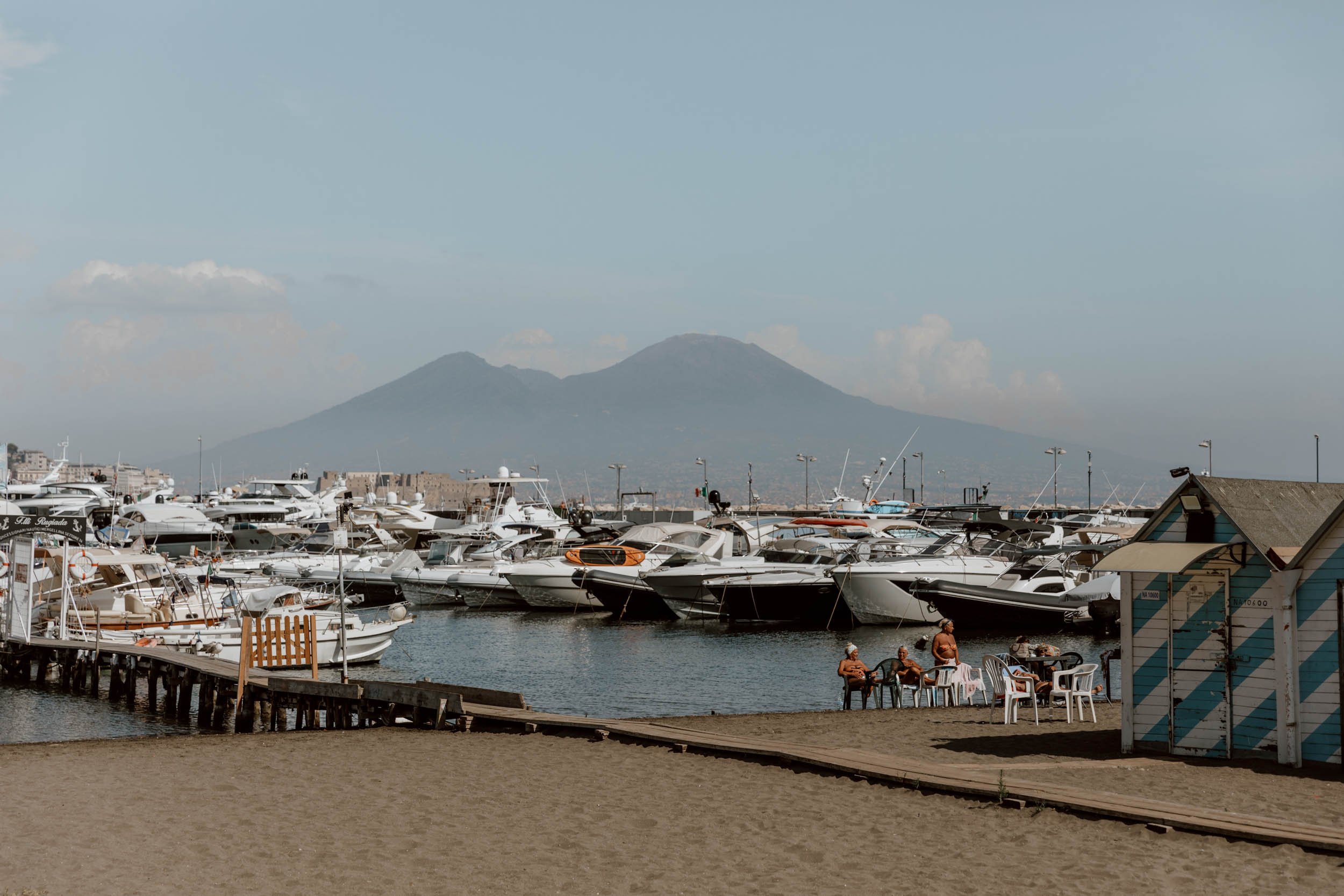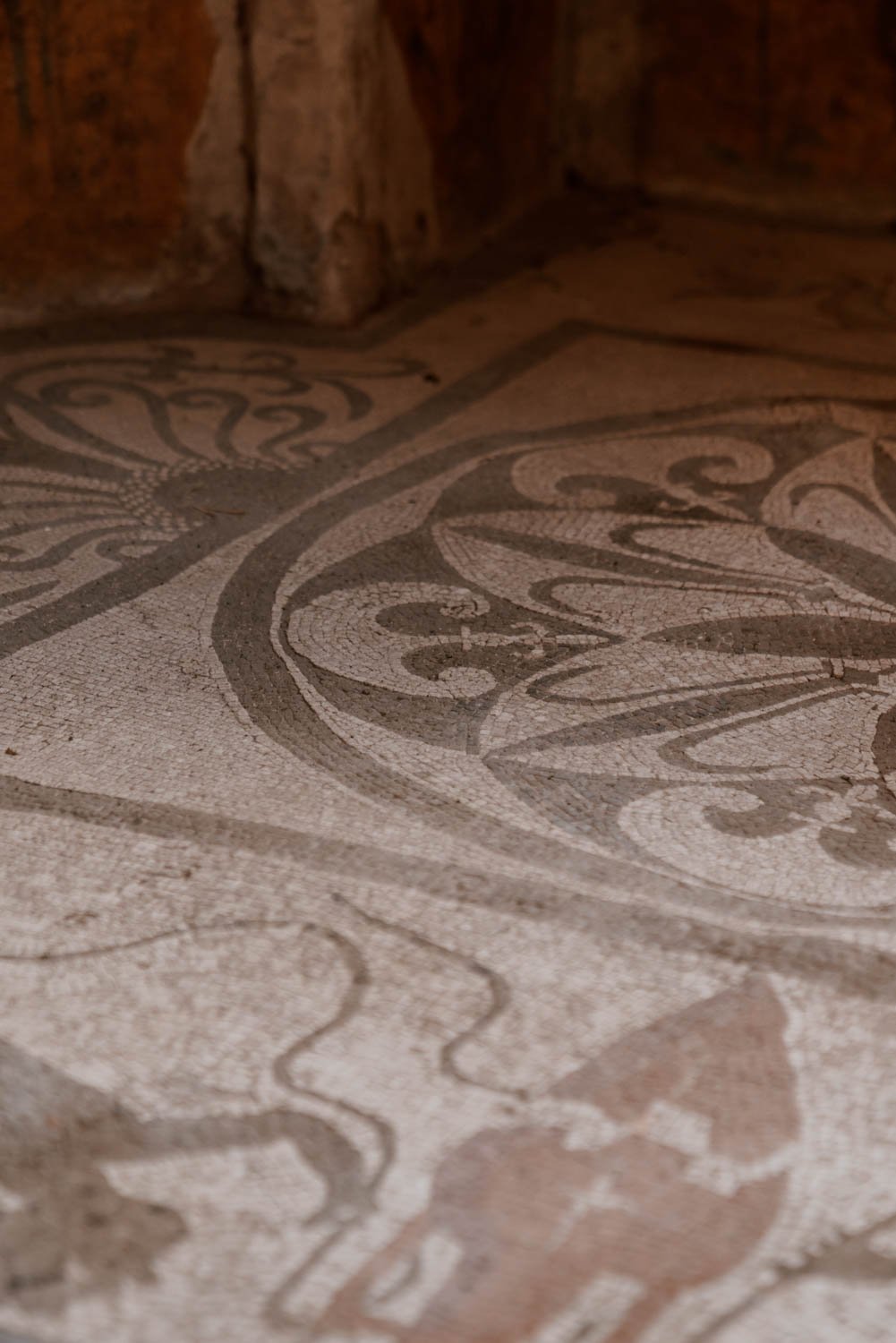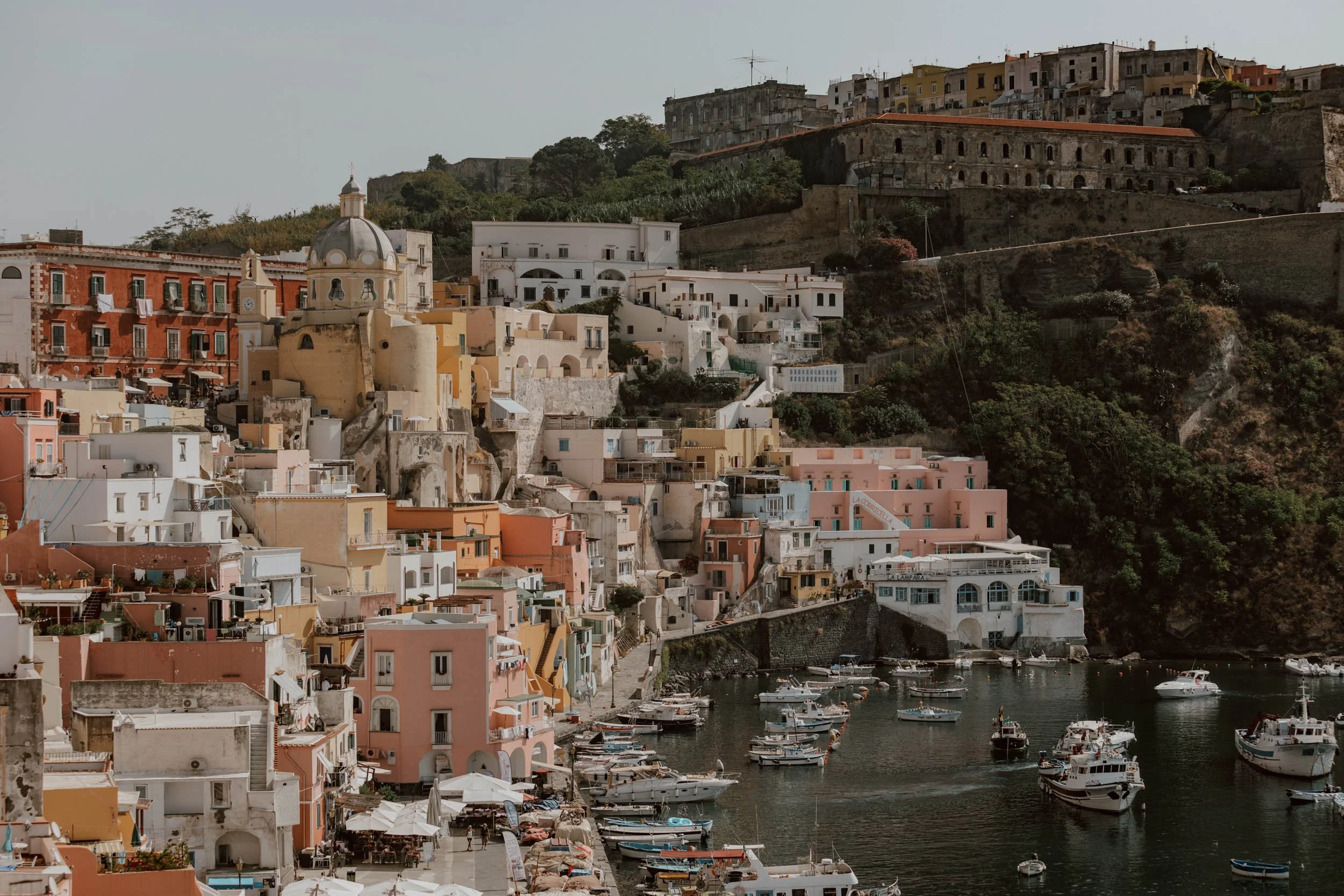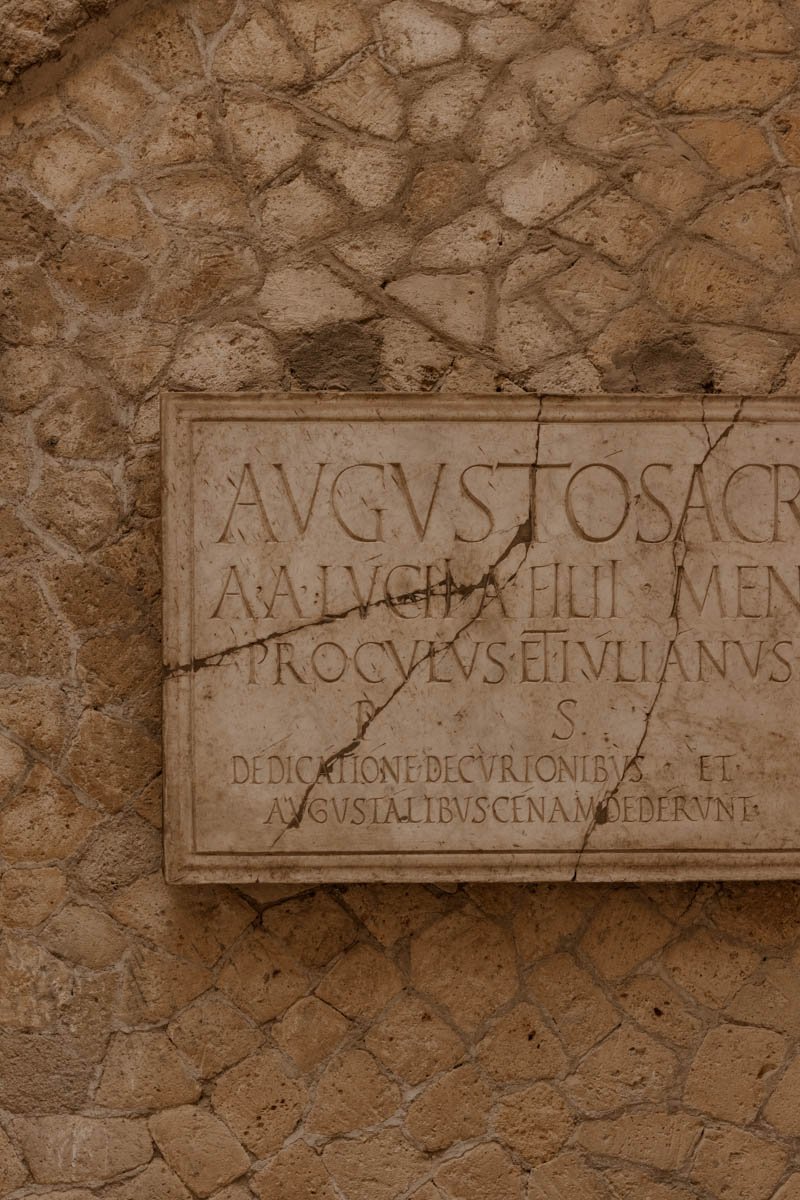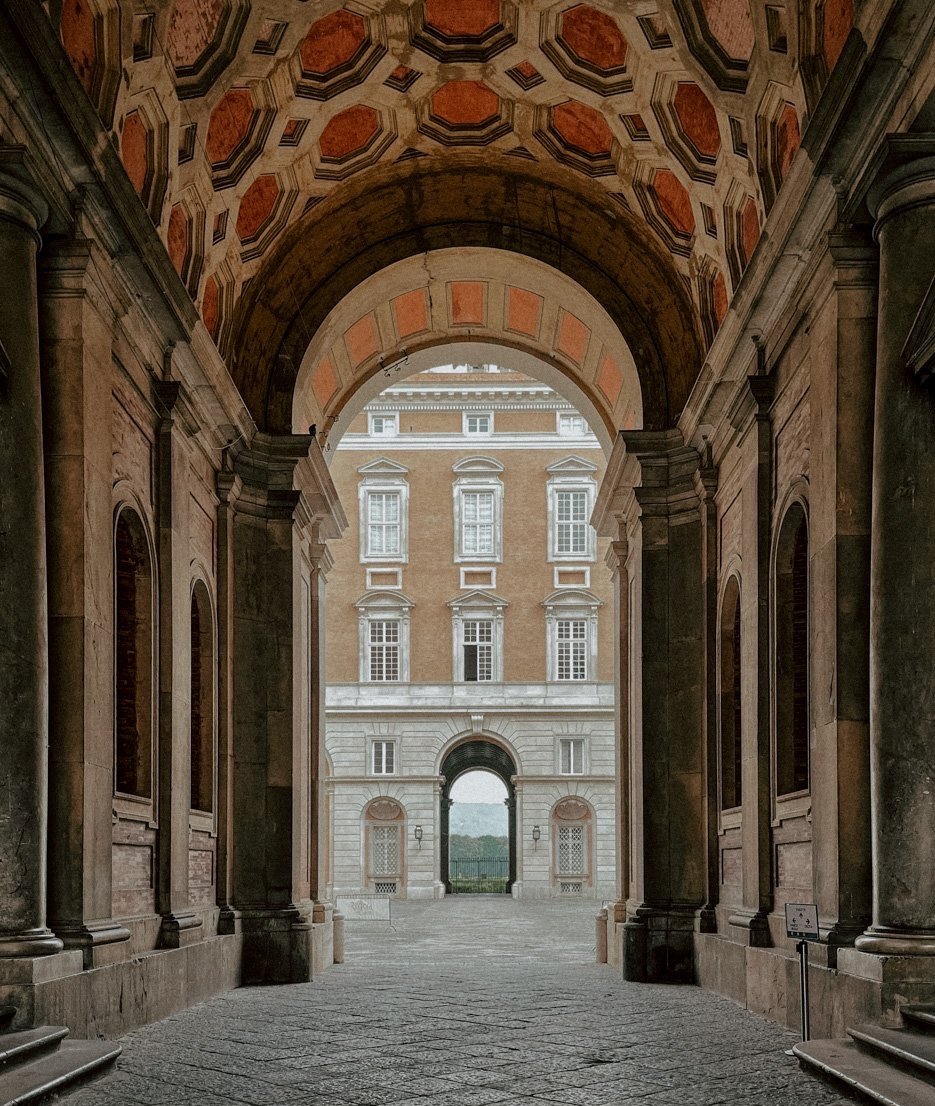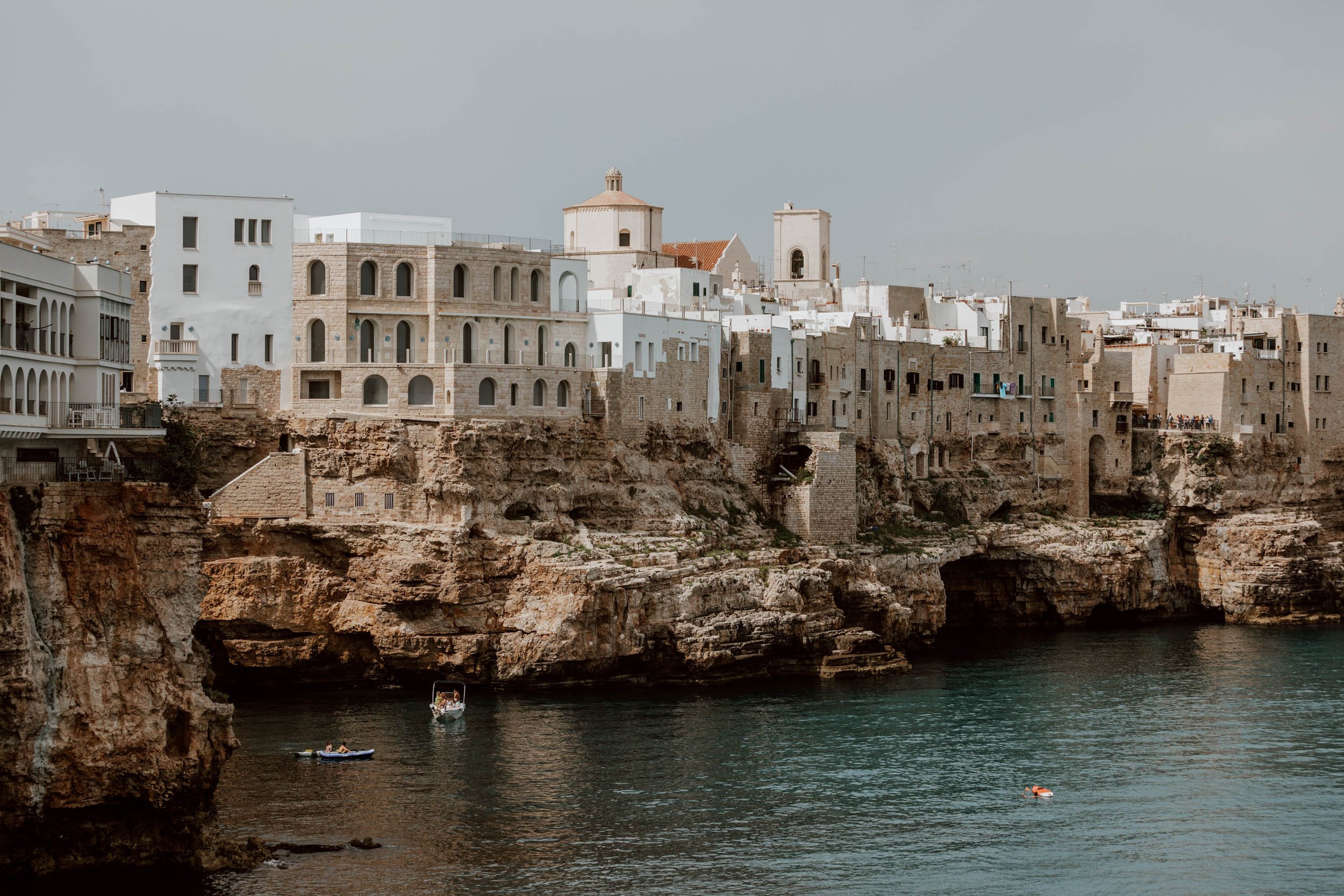Looking for the best day trip from Naples? Our guide’s got you covered!
Chaotic, passionate, loud.
A day in Naples’ narrow streets, rarely touched by sunlight, can sometimes feel like a week. Several of its palazzos are crumbling, there's graffiti almost everywhere, the traffic takes no prisoners, everyone smokes, the coffee is triple strength, and too many blackened Baroque masterpieces live in a state of run-down abandonment.
Some of the reasons we love Naples (Napoli) are the very same reasons that many want to leave almost as soon as they arrive. Indeed, if it weren’t for the several excellent day trips on the doorsteps of this hectic southern Italian city, we suspect far fewer would spend time here at all.
Whether you end up loving the city or not, it is an essential part of many an Italian itinerary, and the ideal base to visit several of the country’s most famous places and UNESCO World Heritage Sites. So, whether you’re fascinated by Roman ruins, or crave the coast, want to island hop around the Phlegraeans or explore the world’s largest royal palace, there’s plenty to keep you occupied during your stay in Naples!
This is our guide to the best day trips from Naples, Italy.
A Note About Getting Around
Understanding that many people choose to rent a car to explore when they travel, we usually give advice on journey times, routes and parking in our ‘Day Trips’ blog posts. However, for those day trips that begin in Naples, we have one firm recommendation - avoid driving into, out of and around this vast city unless absolutely necessary.
We have done many an Italian road trip, but Neapolitan drivers are, quite frankly, a bit mad. And trying to understand the rules of the road - or lack there of - in this part of southern Italy will test the patience, and the nerves, of the most well-practised and considerate visitor.
It’s just not worth driving or renting a car - especially as the transport connections for all the best day trips from Naples are so excellent!
Pompeii
Italy's most important archaeological site and amongst the world's most captivating historical heritage, the Roman town of Pompeii is a popular and easy day trip from Napoli.
Indeed, visiting Pompeii is the primary reason for many travellers to even go to Napoli!
Buried under ash by the eruption of Mount Vesuvius in 79 AD, it was preserved in the most remarkable way for over 1,500 years until Pompeii's accidental rediscovery in 1748 sparked significant interest. Charles of Bourbon, the King of Naples, initiated the first official excavations in the mid-18th century, and there was a treasure trove of artefacts and humanity under the ash and pumice.
Talking about how they offer an incredible opportunity to 'step back in time to ancient Rome' is a cliché, but it very much applies here for all generations of traveller.
How to Visit Independently | As with many of the best day trips from Naples, visiting Pompeii without a tour is actually rather straightforward, and will involve taking a train from Napoli Piazza Garibaldi (Google Maps).
There are three different lines that you can take, but the two most common (and fastest) are:
EAV Circumvesuviana (Napoli - Sorrento line) | €3 one-way · 35 minutes · busy commuter train
Campania Express | €15 one-way · 35 minutes · fancier train with AC
Both these options will drop you at Pompei Scavi station (sometimes written as 'Pompei Scavi-Villa Misteri'), and you'll be a two-minute walk from the Porta Marina entrance to Pompeii.
We’ve written an in-depth guide on how to reach Pompeii from Naples, and you should read that before attempting this journey.
Given the popularity of Pompeii amongst visitors to the region, if you’re here in the busier summer months, we highly recommend buying your tickets in advance to avoid the sometimes extraordinarily long lines.
Tickets are best bought through the official Ticketone platform, but they’re also available on GetYourGuide. Alternatively, if you’re happy to make your way to Pompeii independently, but would like an expert guide to bring the site alive, this tour with an archaeologist is exceptionally popular and includes your entry ticket.
Take a Tour | If you’d prefer the convenience of joining a tour which includes transport from/to Naples, as well as a guide and skip-the-line tickets, be sure to take a look at this popular half-day tour option.
Travel Tip // Many people - us included - choose to combine a day trip from Naples to Pompeii with a visit to Vesuvius. If you’ll be making the trip independently, you can find absolutely everything you need to know in our complete guide to pairing the two sites.
There is however a fantastic tour option which combines both in a single, full-day trip from Naples. It includes hotel, cruise port or train station pick up (and drop off), a guide, entry tickets to both Pompeii and Vesuvius, transfer between the two sites and lunch.
Alternatively, you can join a tour from Naples the pairs Pompeii with the sister ruins of Herculaneum.
Start planning ahead with our main guide: 17 Things To Know Before You Visit Pompeii
Procida
A small pastel-coloured island of faded grandeur, fishing boats and fishermen, Procida is not nearly as well-known or well-visited as other islands in the Bay of Naples.
Truth be told, beyond the views, the pretty harbour of Coricella and the towering Terra Murata (a 15th century walled medieval village sitting atop the island’s highest point), there isn’t a huge deal to do in pretty little Procida.
Instead, a visit here is about simple pleasures of slow southern Italian life in a place that embodies slow Italian living.
The real positive as compared to other islands within this article, is that Procida’s diminutive size means it is actually ideal to visit on a day trip from Napoli: if you take an early boat out and one of the last back, perhaps taking advantage of the island’s bus network or hiring a bike, you can cover most of its main sights easily.
We’ve written a complete guide to visiting Procida (published soon), filled with all our favourite things to do on this wonderful little island, so we recommend heading over there before catching that boat!
How to Visit Independently | To make your own way to Procida, simply head to the Molo Beverello port just outside Naples historic centre (here on Google Maps) from which you can catch one of the regular hydrofoils. These take 30 - 40 minutes depending upon the crossing type and cost approximately €27 one-way or €50 for a return journey.
Tickets can be easily purchased at the port, but we’d recommend arriving early during high season as tickets can and do sell out. Alternatively, you can buy the tickets in advance. As there are a number of companies operating this route, we’d recommend first looking with an aggregator like FerryHopper or Direct Ferries to enable you to see all departures, from all operators.
Note that the last ferry departs Procida at around 7pm.
There are also ferry departures from Calata Porta di Massa (Naples’ larger port that can carry vehicles), but these are a fair bit slower so not ideal for making the most of your time on a day trip.
You can find further information in our guide ‘How to Get to Procida From Naples’
Upon arriving into Procida, to discover the island you have three options: by foot, bike or bus.
It’s very small and easily walkable for those in good health, but to maximise your time on the island you may be better off renting an electric bike (there are several companies at the port) or using the local bus network.
We recommend heading over to our complete guide to Procida for full details on how to get around the island by bus, and the things you absolutely cannot miss on this wonderful little island.
Take a Tour | Given that Procida is just a short boat ride away, and the ease of getting around the island independently, we really don’t think going on a tour is necessary (but this one does exist if you’d really rather the day was sorted out for you).
Alternatively, for a really special experience - that also allows you to visit two of the most popular Phlegraean Islands - you could hire a private yacht from Naples and set sail to Ischia and Procida on your own timetable for a true Italian experience. This option is incredibly popular with excellent reviews.
Ischia
Born of a volcano, and covered with lemon groves, vineyards and olive trees, Ischia is a place of abundant nature whose lush hills have earned it the name, “L’Isola Verde” or “Green Island.”
The largest of the three Phlegraeans islands, it’s the perfect destination for those seeking laidback joy and plenty of pampering whilst relaxing back in Ischia’s mineral-rich waters and dreamy spa resorts, soothing aching muscles in warmer climes.
Ischia’s size means it’s better discovered slowly over a few rather than a single day, but if you’re keen to explore even with limited time, some sights you should include are:
· Aragonese Castle
· The pretty villages of Sant’Angelo and Forio
· La Mortella Gardens
· A couple of hours at one of Ischia’s thermal spas
· A boat tour of the island
We’ve written a complete guide on all the best things to do in Ischia (published soon), so we recommend heading over there to help you plan your visit and decide what can’t be missed!
How to Visit Independently | Throughout the year, three companies (Snav, Medmar & Alilauro) run a regular service of slow ferries and faster hydrofoils between Naples and Ischia.
What is super important to realise before booking your ticket however, is that there are several ports in Naples, and several in Ischia.
For the purposes of taking a day trip, we’d recommend catching the fast hydrofoil from Molo Beverello port just outside Naples historic centre (here on Google Maps). These depart regularly, take 50-75 minutes depending upon the Ischia port that you arrive into: the three ports on the island are Casamicciola, Forio, and Ischia Porto, and most day trippers choose to disembark at the latter due to its transport connections with the rest of the island and frequency of service.
Tickets cost around €22 - €25 per person for a single journey,
These can be easily purchased at the port, but again we’d recommend arriving early during high season as tickets can and do sell out. Alternatively, you can buy the tickets in advance. As there are a number of companies operating this route, we’d recommend booking with an aggregator like FerryHopper or Direct Ferries to enable you to see all departures, from all operators.
There are also ferry departures from Calata Porta di Massa (Naples’ larger port that can carry vehicles), but these are a fair bit slower so not ideal for making the most of your time on a day trip.
You can find full details on how to reach Ischia from Naples in our short explainer post (published soon)
Ischia is too large to navigate by foot, therefore you have three options for exploring independently on a day trip:
· Hire a scooter from Ischia Porto
· Take taxis (a very expensive option)
· Buy a 24 hour, unlimited bus pass for €3.60
Take a Tour | There are surprisingly few group tours available from Naples to Ischia: this is the best option available, which includes the ferry ticket, a three-course lunch and free time on the island (but you need to make your own way around).
Alternatively, there are some really great private options including this full-day tour with an expert guide (who meets you in Naples), and a private car / driver to bring you too all of Ischia’s main attractions.
Or, if you fancy pushing the boat out - quite literally - this full-day experience allows you and your group to explore Ischia and its coastline on a private boat with an English-speaking skipper.
The Vesuvius Volcano
Mount Vesuvius towers over the Gulf of Naples, a looming presence visible for miles that has silently existed alongside its Neapolitan neighbours for the best part of 2,000 years.
Single-handedly responsible for the creation of two of Campania’s most famous attractions (Pompeii and Herculaneum) following its catastrophic eruption in 79AD, visiting the volcano itself is a popular thing to do in and of itself.
Not only does the short hike to Vesuvius’ summit offer spectacular views over the surrounding countryside, the towns and villages below, and the Bay of Naples beyond, it also provides the opportunity to gaze down into its vast caldera, to imagine the lives cut short and family lines permanently altered by its violent eruptions of old.
For visitors to Naples, an early morning or afternoon spent hiking Mount Vesuvius should be an essential part of your itinerary, and is an ideal accompaniment on your day trip to Pompeii or Herculaneum.
Visting the volcano is quite straightforward, and you can find all the information on what to expect from the short hike in our guide to Hiking and Visiting Mount Vesuvius.
How to Visit Independently | The easiest way to access Mount Vesuvius independently is via a short train ride from Napoli to Ercolano, followed by a tourist shuttle bus.
The train costs €2.60 per person one-way, and travel time is around 20 minutes.
Disembark at Ercolano Scavi station, and make your way to the Vesuvio Express office (located on the left, just outside the station) from which you can buy your shuttle tickets if you haven’t already purchased them online.
Return tickets cost €10 per person, although you can include your entry ticket to Vesuvius within the same ticket. In this case, the cost is €20 per person, and you can also buy this combo ticket in advance here.
The first shuttle leaves at 10am, the last at 4 pm. Departures are supposed to be every hour, however it’s important to be aware that although there is a timetable, the company doesn’t always strictly adhere to it and will likely wait for the bus to fill up before heading to off.
You are expected to be back at the bus two hours after being dropped off at the entrance however, providing there are empty seats, you can actually take any descending shuttle run by the company.
Take a Tour | Whilst we were very happy to visit Vesuvius independently, we appreciate that some people prefer the ease of joining organised tours and not having to battle with public transport.
In this case, there are a couple of tours you may want to consider joining:
· This excellent half day guided tour of Vesuvius from Naples includes skip-the-line tickets and lunch.
· Alternatively, if you’d like to visit Pompeii in the same day we recommend this highly rated full-day tour which combines entry to both sites, pick-up and drop-off in Naples, lunch, and an an English-speaking guide to bring the history and stories to life.
Travel Tip // Whether you choose to do it independently or with a tour, it’s super popular to combine a day trip to Vesuvius with one of the nearby Roman sites.
If you’d like make your own way between the Pompeii and Vesuvius, head over to this post which explains exactly how to do it. If you’d prefer to have the logistics sorted by a third party, this tour is incredibly popular.
Alternatively, you can combine Vesuvius with the ruins of Herculaneum, which are also accessed via Ercolano train station. We’ve shared more detail on this in the next section!
Herculaneum
Buried deeper and sealed in more tightly than its better known neighbour, this Roman town named after a Greek hero continues to reveal itself slowly to the modern world.
Cracked by an earthquake seventeen years before Mount Vesuvius erupted in a cataclysmic fit of anger, the honeycomb walls of Herculaneum still bear the scars of nearly two thousand years ago.
Just 10 miles away from Pompeii, this smaller and exceptionally well preserved town trapped between the sea and volcanic foothills, suffered the same fate in 79 AD: Vesuvius blew its top and the pyroclastic flow simultaneously destroyed and preserved Herculaneum twenty metres deep.
Discovered in the 18th century, under threat in the1990s, and now steadily emerging out of the shadow of Pompeii, a morning or afternoon in the quieter and lesser-visited Herculaneum is a more meaningful and experience to some travellers and those with a keen interest in the Romans.
Should you choose to visit, be sure to read our complete guide to Herculaneum first!
How to Visit Independently | It's really easy and affordable to independently visit Herculaneum on a day trip with public transport.
As the site only requires two or three hours, you don't have to set off super early, and can choose to do it in the morning or an afternoon depending on conditions, hangovers, and other plans.
It’s the same journey as Vesuvius, with the EAV Circumvesuviana train from Naples' Garibaldi & Porta Nolana stations costing €2.60 for the 20-minute journey.
There is also the option of the more expensive Campania Express.
This is also the main line to bring travellers to Pompeii, so it can become very busy. Those looking for a less crowded, more comfortable train ride should make sure they board the line from Naples which terminates in Torre Anunziata, rather than Sorrento, or opt to pay extra to board the less frequent tourist-centric Campania Express (€15 one-way, €25 return).
Whichever option you take, you will get off at Ercolano station which is around a 10-15 minute walk to the entry gates at Herculaneum.
We've explained the differences further, plus shared step-by-step details and travel tips for a smoother journey, in this post: How To Get To Herculaneum from Naples.
Take a Tour | Of course, you can also opt to join a tour which includes pick-up and round-trip transport from Naples, as well as your guide within Herculaneum. This half-day guided trip has excellent reviews.
If you would like to know on how to combine it with Pompeii or Vesuvius, then make sure to read our main guide: 11 Things To Know Before You Visit Herculaneum
Amalfi Coast
The Amalfi Coast - that extends from Punta Campanella in the west to Salerno in the east - is southern Italy’s most famous coastline. Deemed an outstanding example of a Mediterranean landscape by UNESCO nearly 20 years ago, its 34 miles is famous for towering cliffs that fall away into the blue waters of the Tyrrhenian Sea, and its thirteen colourful towns piled high.
From the yachts and luxury resorts of the iconic Positano, the secluded shorelines of Praiano and stunning ocean views of Ravello, each has a unique feel, vibe and topography.
Connected by ‘the road of 1,000 bends’, a 25 mile stretch of narrow asphalt that passes up, over and through cliffs, gorges and whitewashed villages - the shimmering sea always within sight - the drive along the coast is also considered to be one of Europe’s most scenic (albeit somewhat ruined these days due to the truly horrendous traffic that builds up as soon as the tourists arrive).
The problem with all this beauty? The numbers of tourists drawn to these pastel-painted villages and cliffs terraced with lemon groves have gotten a little out of control, with more than 5 million visiting annually.
It’s a similar story as Cinque Terre further north.
That’s why we personally don’t believe in taking day trips to this already congested coastline, and instead spending a few days exploring a little slower and deeper.
However, with that said, we absolutely appreciate that not everybody has the luxury of time, and may only be in this part of the world once in their life; for some a day trip from Naples to the Amalfi Coast is the only option - which is why we’ve included it in this guide.
How to Visit the Amalfi Coast from Naples | Whilst it is theoretically possible to visit the Amalfi Coast from Naples independently - either with a ferry in high season, or train to Sorrento then a bus onward to Amalfi - this is one of the only day trips from Naples that we’d strongly recommend doing as a tour, rather than by yourself.
There’s just too many moving parts (especially if you wish to visit more than one town), and a tour will allow you to cover much more without having to worry about the logistics or deal with multiple modes of transport.
Given the Amalfi Coast’s popularity, there are an overwhelming number of tours available to book online - we’ve selected a few of the most popular and highly-rated:
· This is by far the most popular tour, with thousands of excellent reviews and the option to travel in a small group. It includes stops in Sorrento, Amalfi and Positano.
· Alternatively, this tour is another incredibly popular option that allows you to include a 30-minute boat ride along the coast in Amalfi.
· If you’re visiting Naples on a cruise, consider this highly-rated shore excursion that visits Positano, Amalfi and Ravello.
· For those that would prefer to experience the beauty of the Amalfi Coast on a private tour, we recommend taking a look at this popular tour that visits Sorrento, Positano, and Amalfi with a private driver.
Royal Palace of Caserta
In 1734, with a newly independent Kingdom of Naples, came a new monarch, King Charles VII.
Concerned about the potential for assaults from the sea (particularly from the British), he imagined a new royal court and administrative centre far from the coast.
Most importantly, it was to be more grand than Versailles.
And so, in 1752 following the purchase of the fiefdom of Caserta (35km from Naples) and under the watchful eye of Luigi Vanvitelli - considered to be one of the greatest Italian architects of the 18th century - construction began on one of the largest royal residences in the world, The Royal Palace of Caserta and its vast Park.
Inspired by the 16th century villas found across Tuscany and, yes, that most famous of palaces in France, it is a triumph of Italian Baroque architecture with more than 1000 rooms of marble, frescoes, paintings, tapestries, stucco and statues. What really sets Caserta apart however is what’s found beyond the palace walls; a 120 hectare expanse of manicured gardens, woodland, promenades and fountains.
The King wanted a palace; what was created for him was one of the Europe’s most impressive.
How to Visit Independently | The easiest way to reach the Royal Palace of Caserta is via a direct train from Napoli Centrale station.
There are several departures every hour, journey time is 35 - 50 minutes and a single costs €4 per person. You can check timetables and book tickets on the official Trenitalia website.
Get off the train at Caserta station, from which it’s just a 5-minute walk to the Royal Palace.
You can buy your tickets on arrival (€19 per adult, free for children under 18, with various concessions available), but if visiting at the weekend or during the busy summer months it’s recommended to book them in advance; these can be purchased online on ticketone.it, the official ticket seller for the palace.
Due to its size, we’d recommend allowing an entire day to explore the Caserta Palace and its grounds. Not sure you can manage all that walking? You can also rent bikes to get around or opt for the shuttle bus service which transports visitors from one area to another.
Take a Tour | We’ve found one relatively popular tour that includes transport from Naples, but we wouldn’t really recommend it - it’s very expensive, and that cost doesn’t actually include a guide!
A better alternative would be to make your own way to Caserta, and then join guided tour when you arrive, like this excellent small-group, three-hour tour which includes your entry ticket.
This also means that once you’re done with the guided tour, you have as long as you want to continue exploring this vast site!
Did you know? // The palace and its gardens have served as a filming location for movies such as Mission Impossible, Star Wars, Angels & Demons and Ciao Professore among many others.
Capri
The best known and visited of the neighbouring islands, Capri is long-establish for the glitz and glam side of Italian summers.
Here at Along Dusty Roads, we haven’t actually been there yet as the islands of Procida and Ischia felt more aligned with our travel style. However, it’s very much one of the most popular day trips from Naples, so we’ve shared the details below to help you make a plan!
And then you can tell us whether it’s somewhere to add to our future travel plans list or not!
How to Visit Independently | To make your own way to Capri, simply head to the Molo Beverello port just outside Naples historic centre (here on Google Maps) from which you can catch one of the regular hydrofoils. These depart regularly, take 50 minutes and cost approximately €27 one way or €50 for a return journey.
These can be easily purchased at the port, but we’d highly recommend arriving early during high season as tickets can and do sell out. Alternatively, you can buy the tickets in advance. As there are a number of companies operating this route, we’d recommend booking with an aggregator like FerryHopper or Direct Ferries to enable you too see all departures, from all operators.
Note that the last ferry departs Capri at 7.10pm.
There are also ferry departures from Calata Porta di Massa (Naples larger port that can carry vehicles), but these are a fair bit slower so not ideal for making the most of your time on a day trip.
Take a Tour | This super popular (and highly rated) full-day tour involves a scenic tour of the Bay of Naples including the famous grottos of Capri, with time for swimming in the crystal clear waters near the Faraglioni, plus 3-4 hours to explore the island independently.
If you’d prefer a private tour, this is a fantastic option, that allows you to discover Capri in a chauffeur driven convertible - la dolce vita indeed!
Travel Tip // If you’re happy to make your own way to Capri but want to maximise the sights that you can see whilst you’re there, consider booking a boat tour of the coast and the island’s incredible grottos - this one has thousands of excellent reviews.
Where to Next?
19 Wonderful Things to Do in Naples
23 Things to Know Before You Visit Naples
Where To Find The Best Pizzas in Napoli
Where to Stay in Naples
An Essential Guide to Procida
13 Wonderful Things to Do in Ischia

